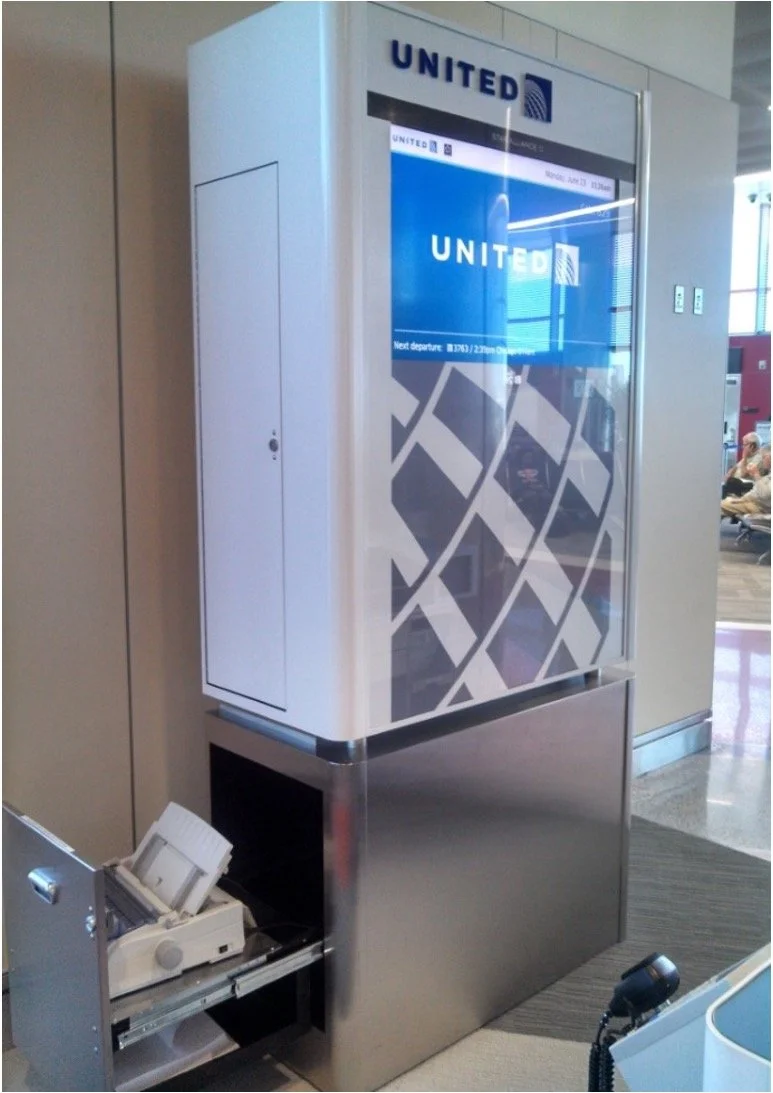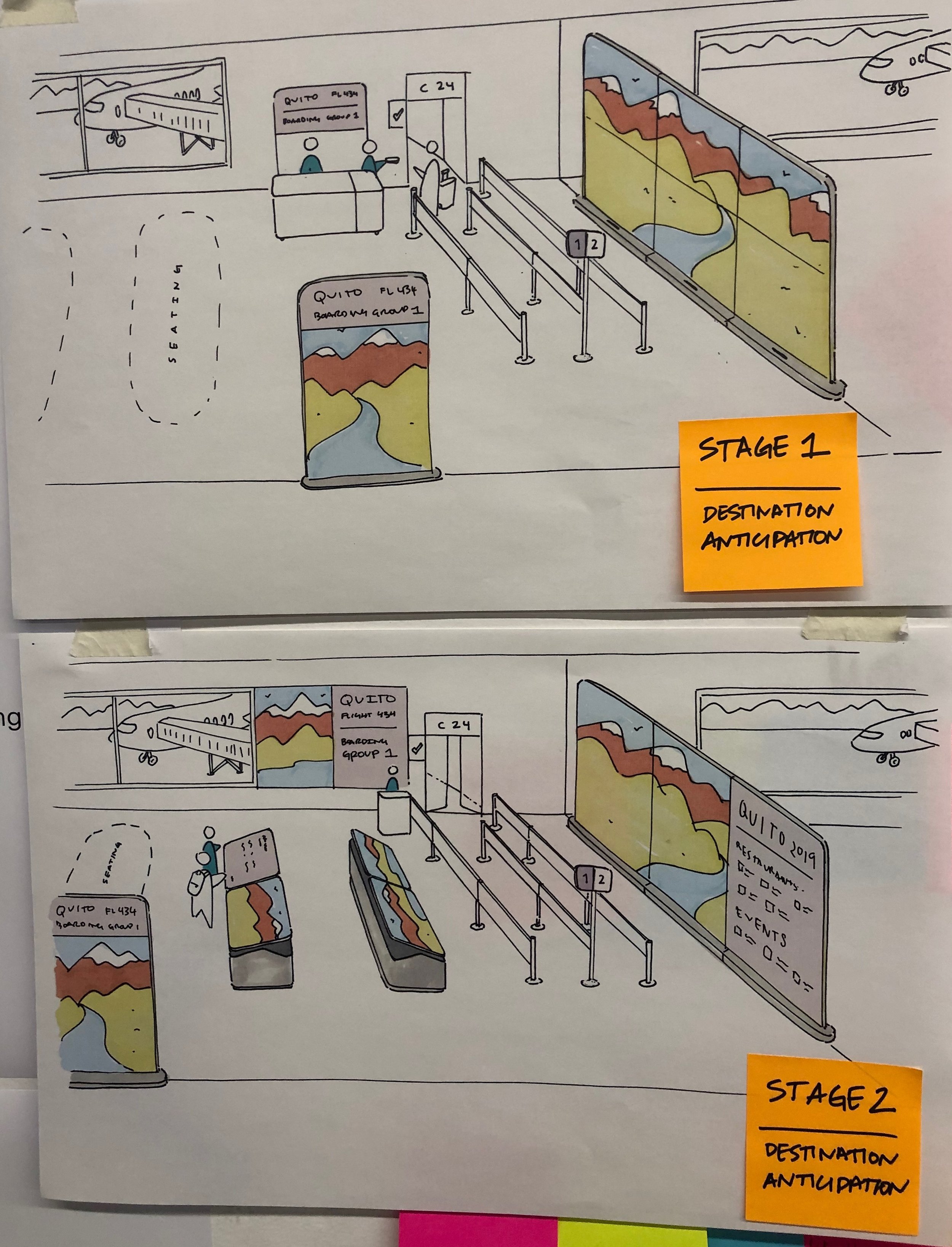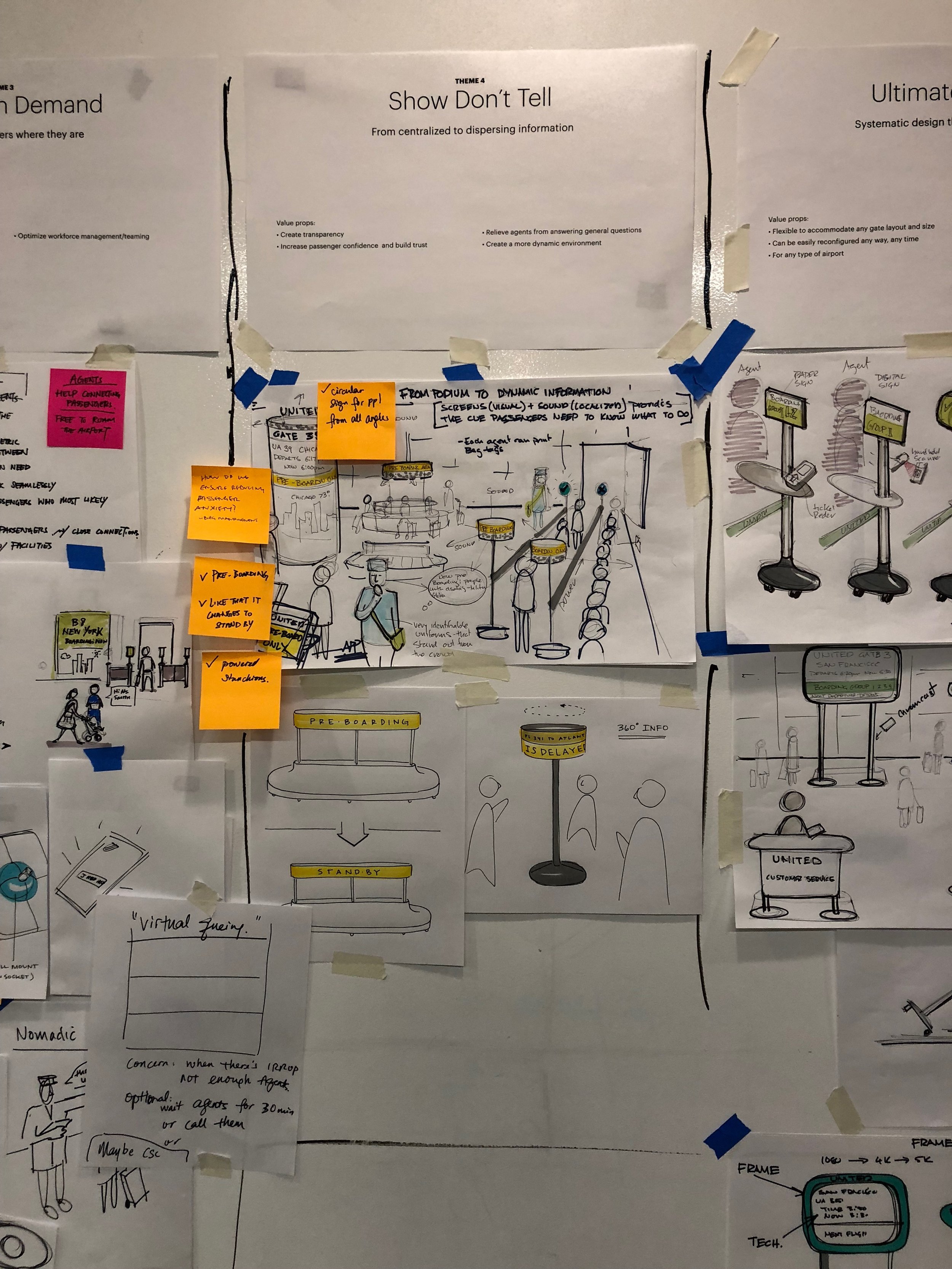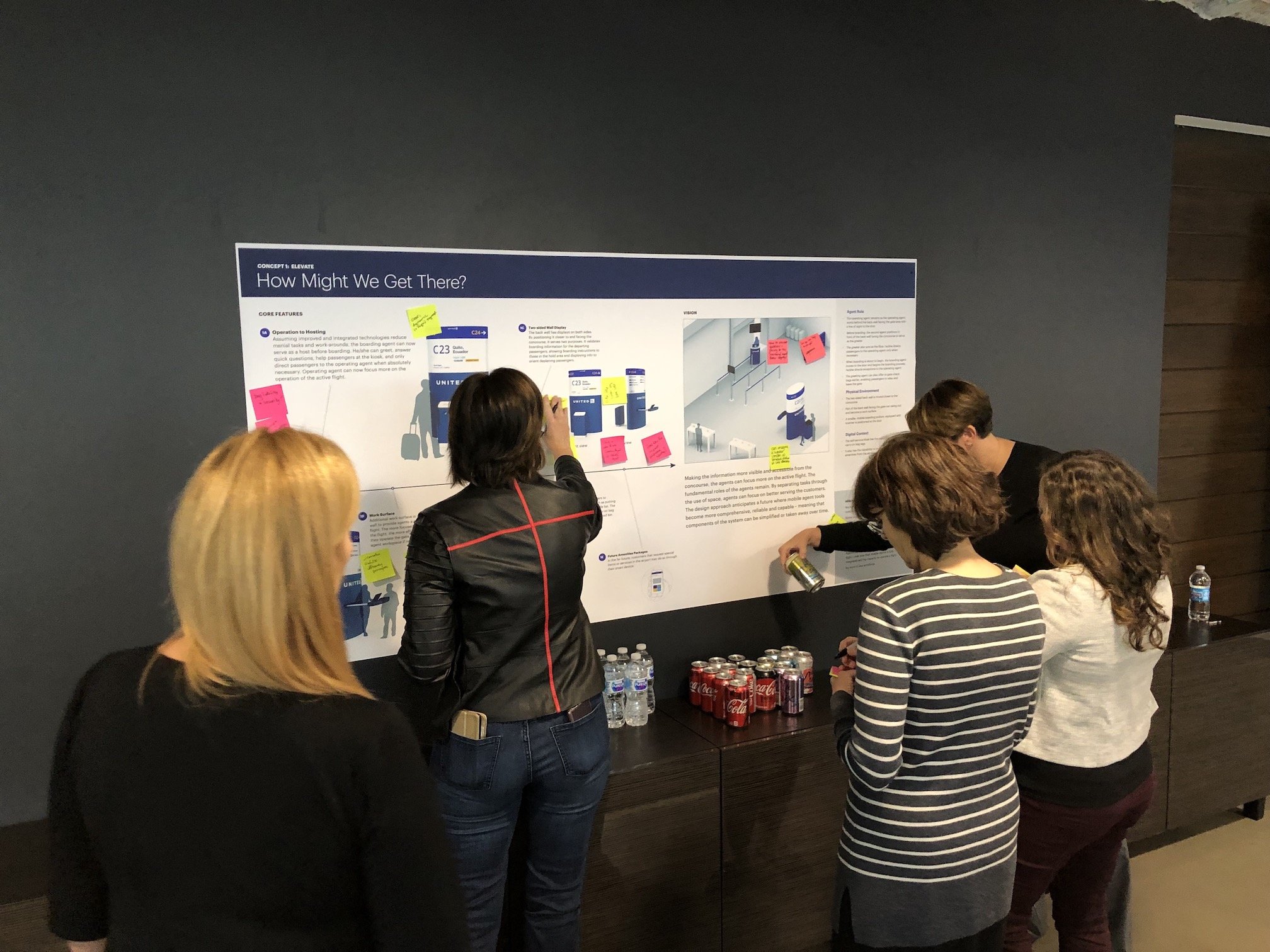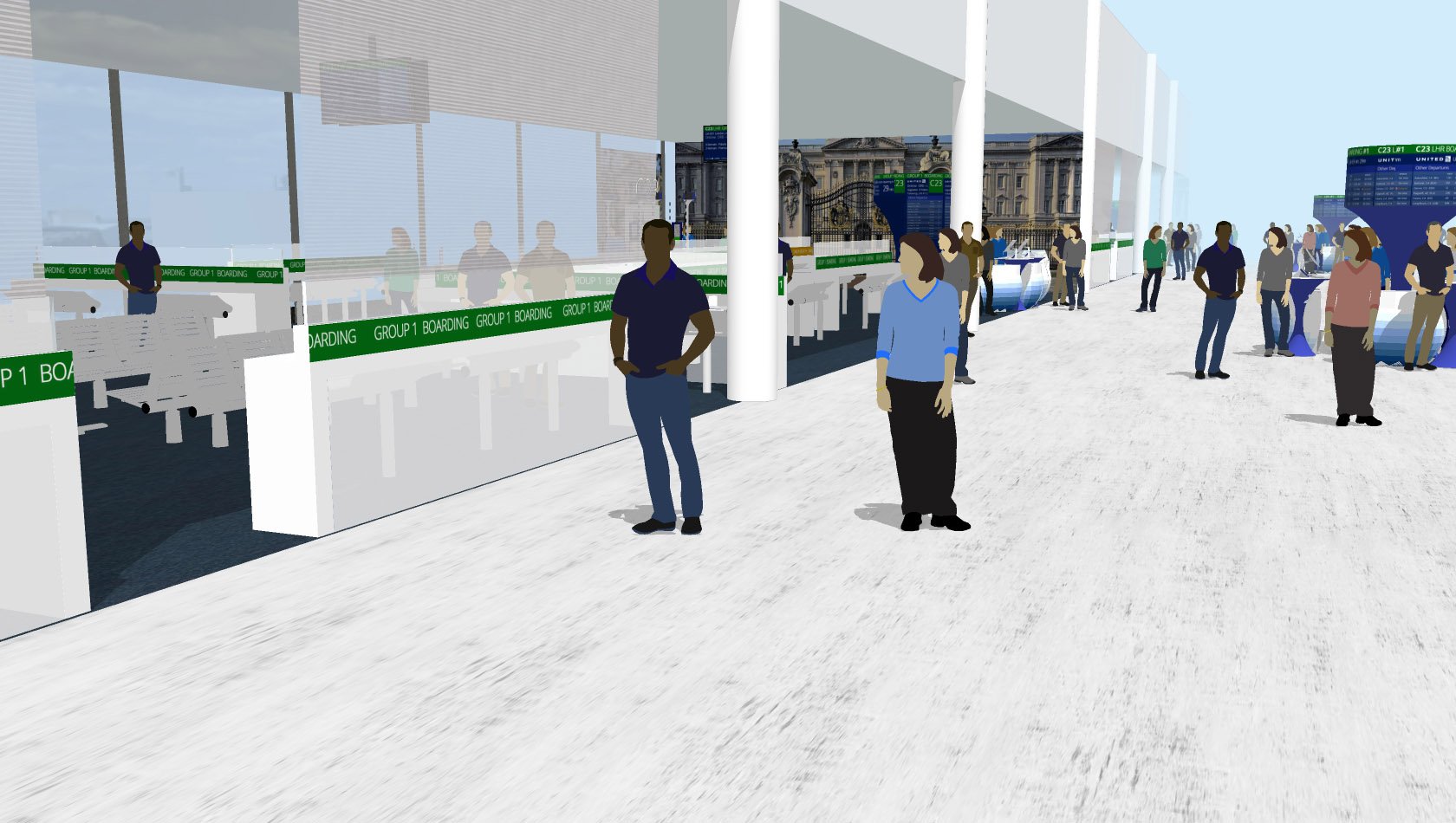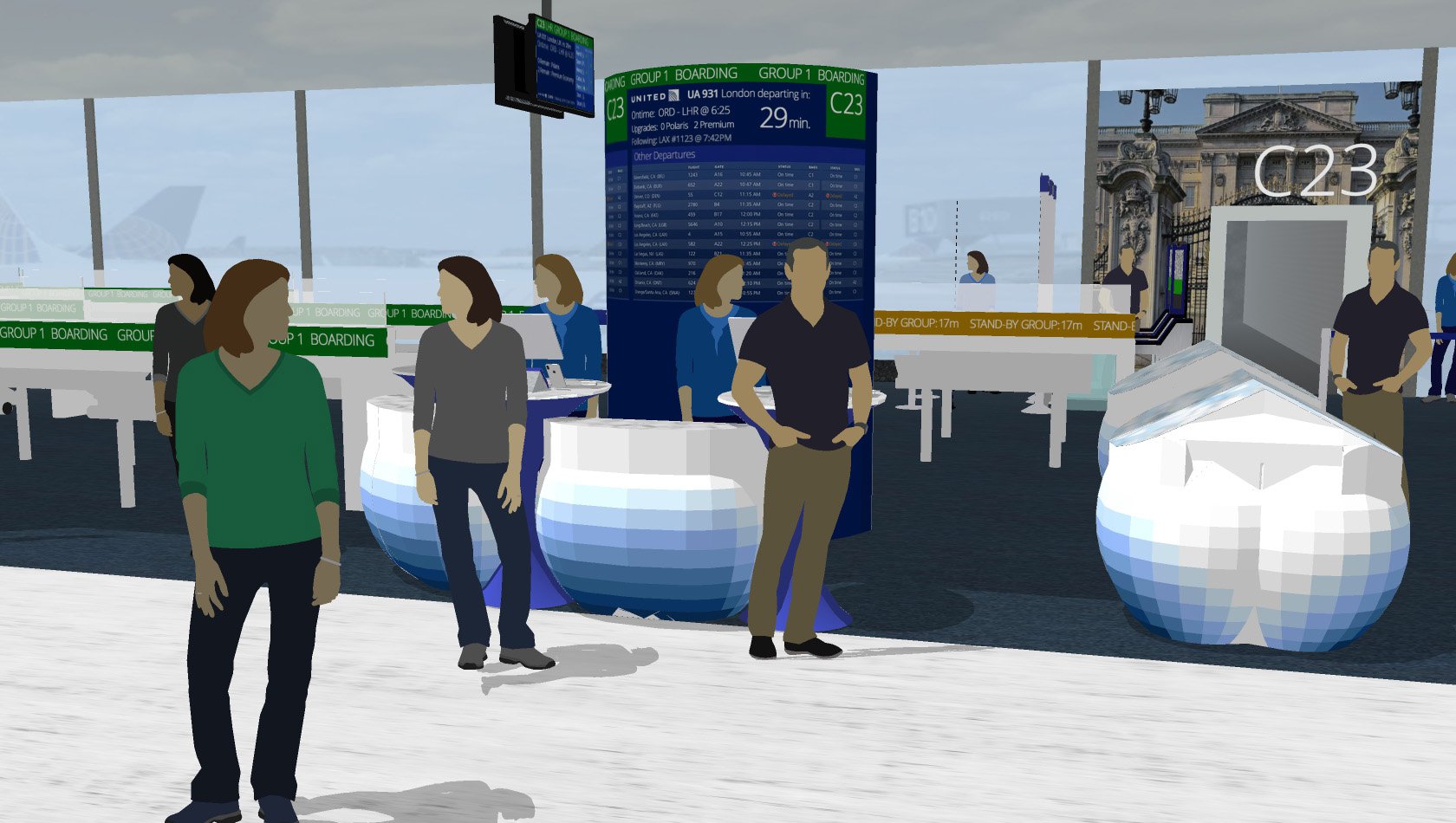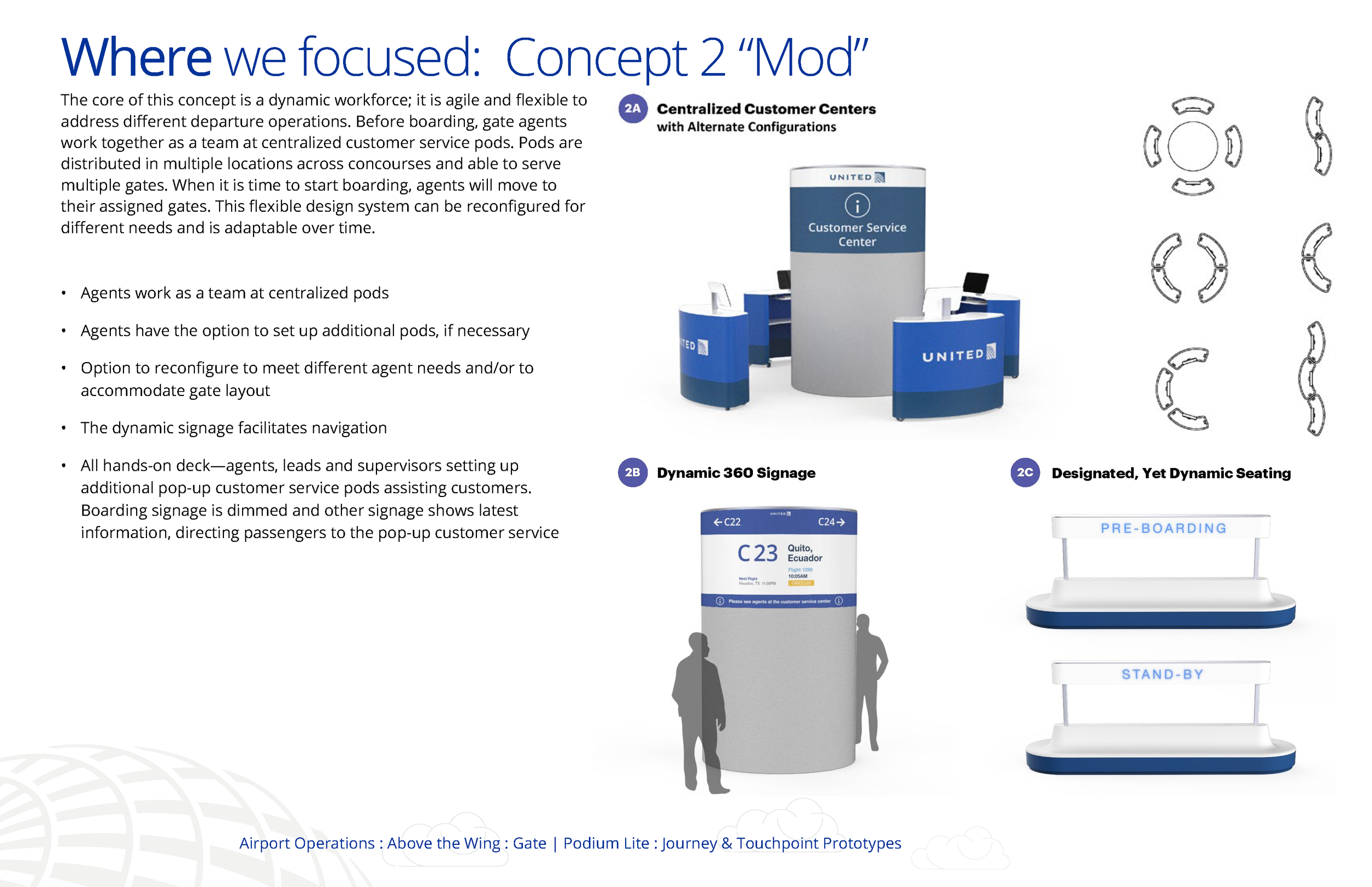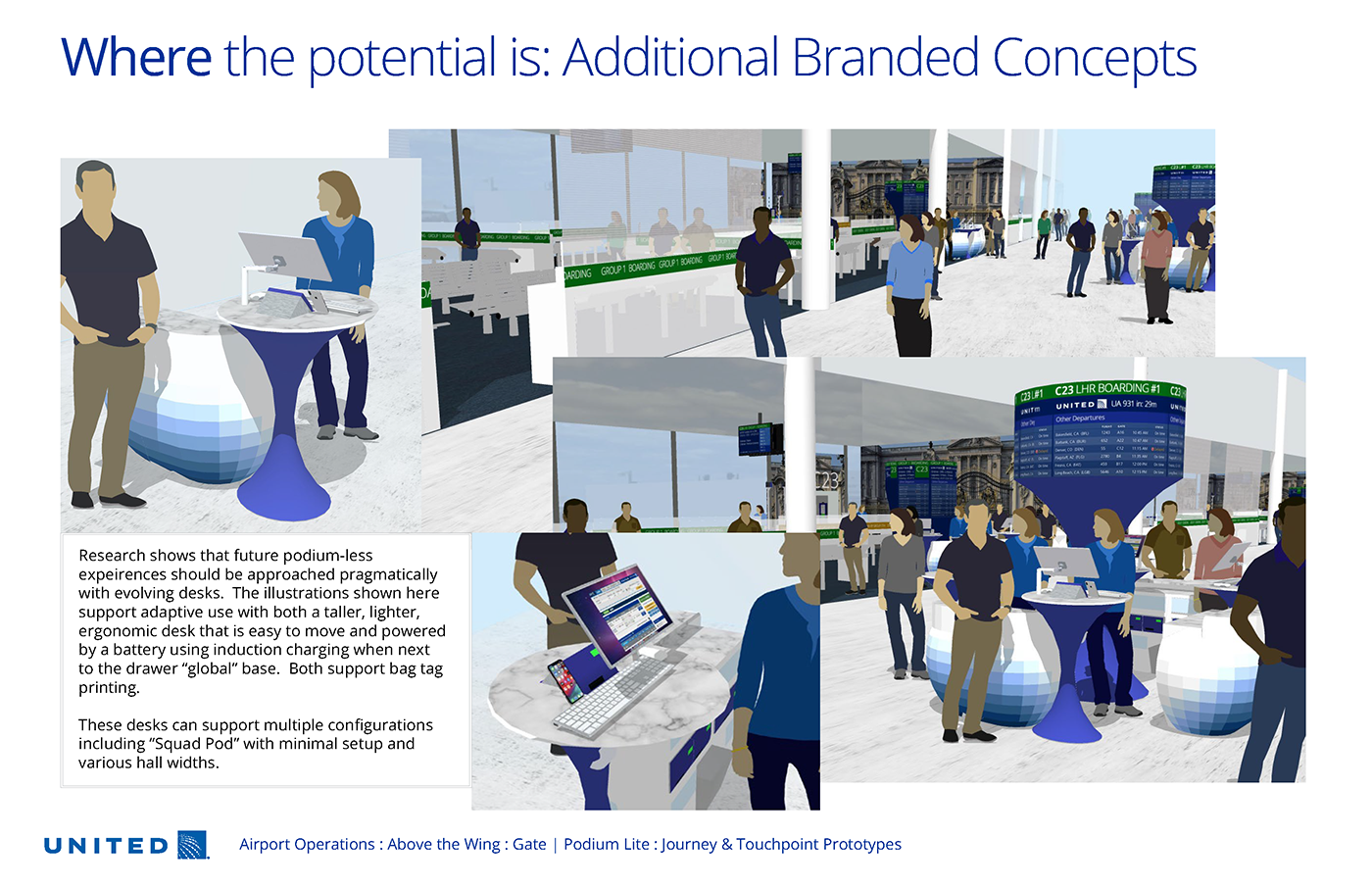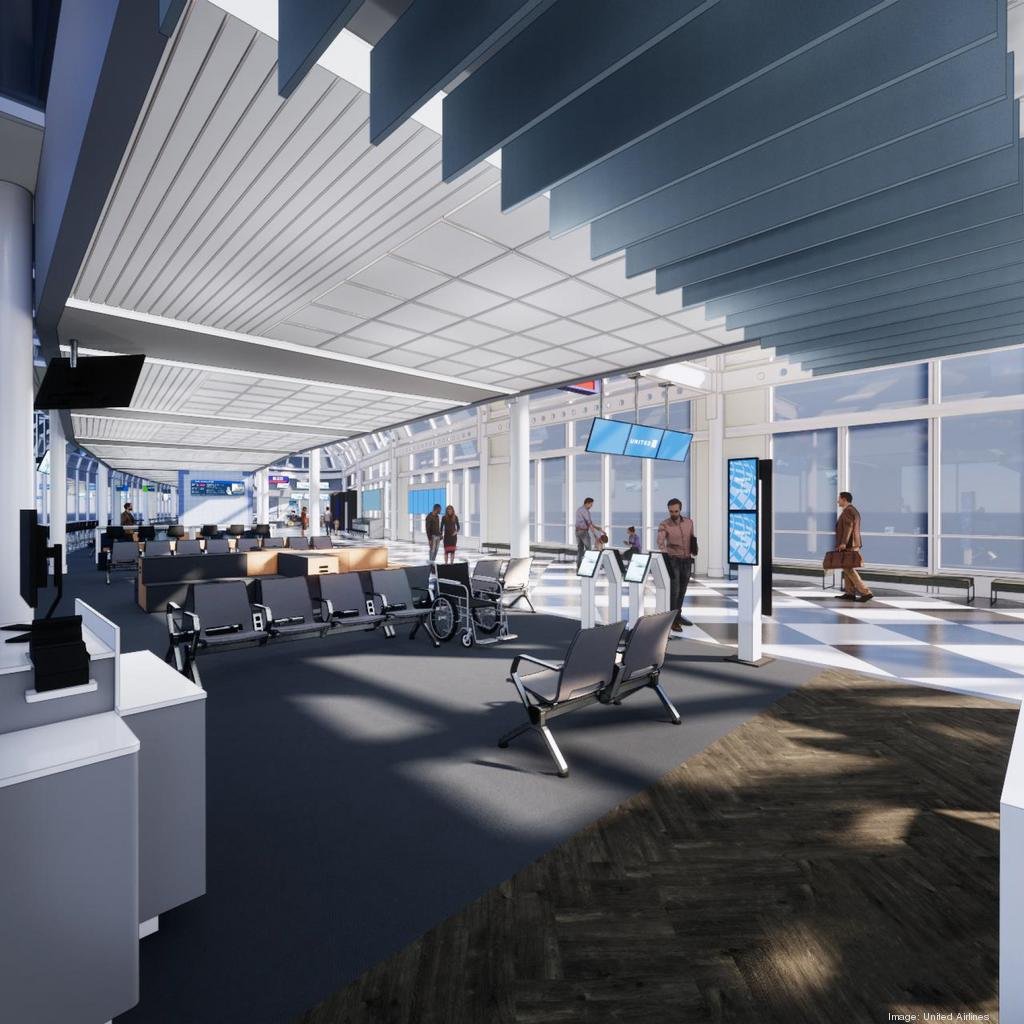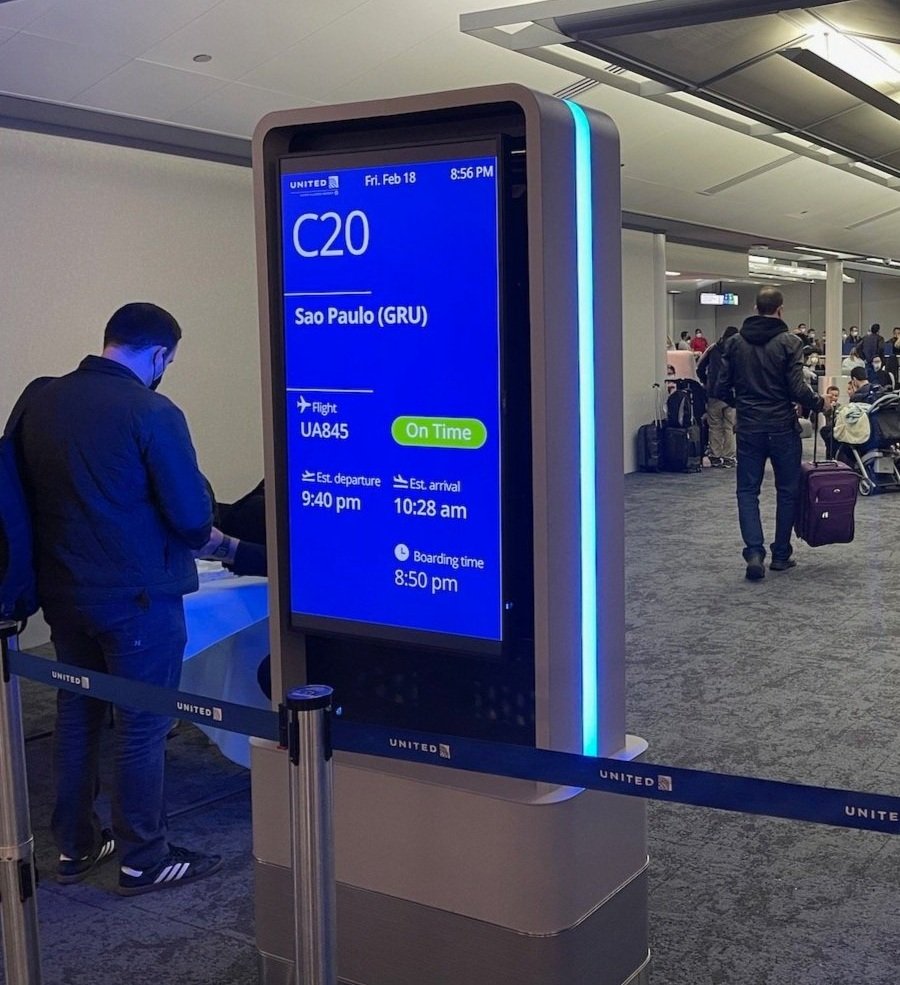
Gate Modernization
Creating the future of airline travel between intentional friction and frictionless
Modern Travel: It’s not just about where you’re going, it’s now about how you get there.
Frictionless versus intentional friction points…
Over 60 %
of consumers look for self-service first, instead of contacting an agent.
The Challenge
Envision the future of travel at the gate while reducing the footprint of the agent podium pragmatically over the next seven years. As agent toolsets continue to migrate towards mobile, we need to empower agents to approach customers proactively without customer barriers and queues symptomatic of legacy podiums. This is a profound shift in the agent experience as podiums are perceived as a place of work. The new experience that is currently in beta at some airports includes work and lifestyle experiences where agents would be free of physical constraints.
What People Are Saying About The Modernization
“This is going to change our business for the better”
— United Director
“We will be able to accelerate our gate modernization with the foundation of this work”
— IT Managing Director, United Airlines
CX Innovation Process
Approach:
During the review of several agencies, I was asked to quietly sketch refined concepts into an augmented reality experience that evolved into two podium designs that would be further tested at airport hubs. The goal was to phase out support of legacy gate equipment such as printers and desktop computers. This was never shared with the agency we used (Fjord) to model prototypes due to communication factors with their work. United asked me to monitor their work daily, providing status reports on progress and assisting when necessary to evolve the design into the work presented for feasible and aligned corporate IT strategy.
Below are the final designs presented after Fjord presented completed prototyping. Although the RFP originally included an augmented reality delivery, this was never realized by the agency. My work included 3D deliverables with an augmented reality experience that could be shared at the airport with front line teams for feedback research to be conducted before prototype models were to be constructed.
Pragmatic Discovery:
Define the goals of the project
SOW draft and finalization
Review RFPs with candidates
Begin internal concept designs aligned to business
Finalize design agency candidate
On-board agency on airport knowledge, business objectives
Begin Research of customers and front-line teams
Agency begins concept sketches
Review of agency sketches with front-line teams
Present findings with leadership pivot points
Finalize sketches
Leadership Science fair with 3D prototypes of models. //Agency relationship ends
Begin rapid refinement of experiences using augmented reality tools
Researching the challenge.
Research Summary
3
Airports visited: ORD, DEN, LAS
24
United agents interviewed
28
Dscout Traveller missions
27
United gates observed
13
Competitor gates observed
10
Airport Customer intercepts
5 Research Themes = Project Principles
Analyzing the challenge.
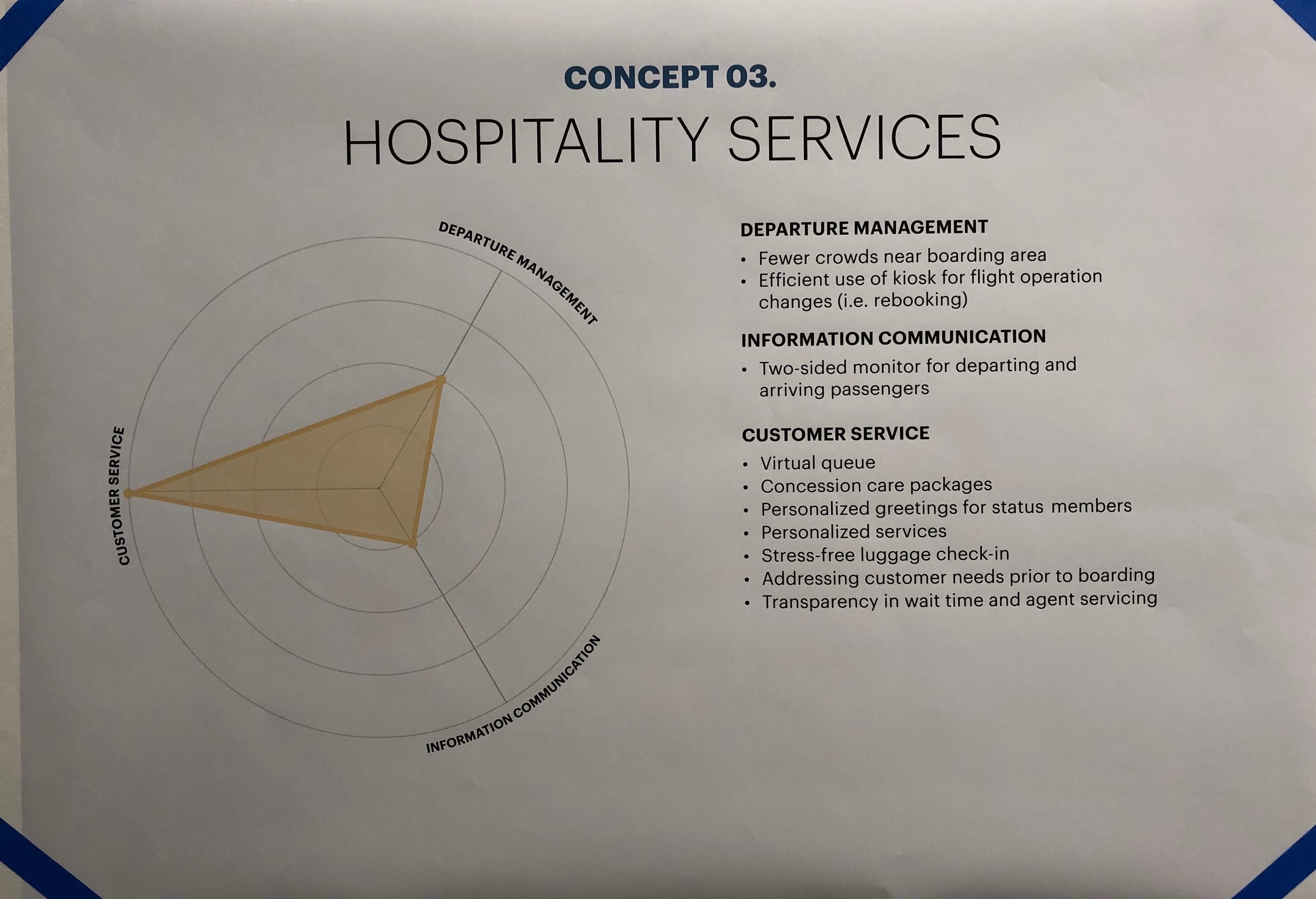

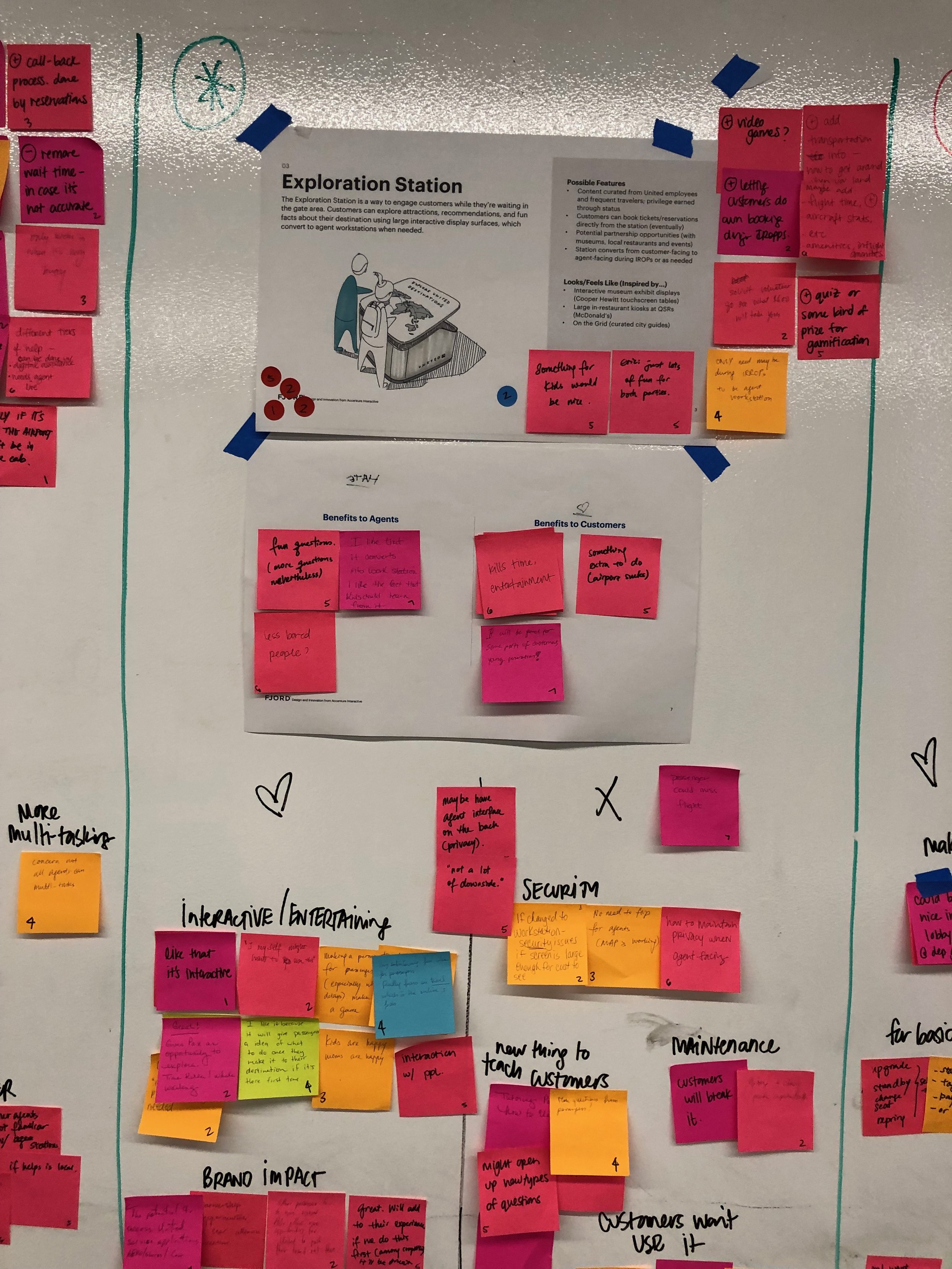
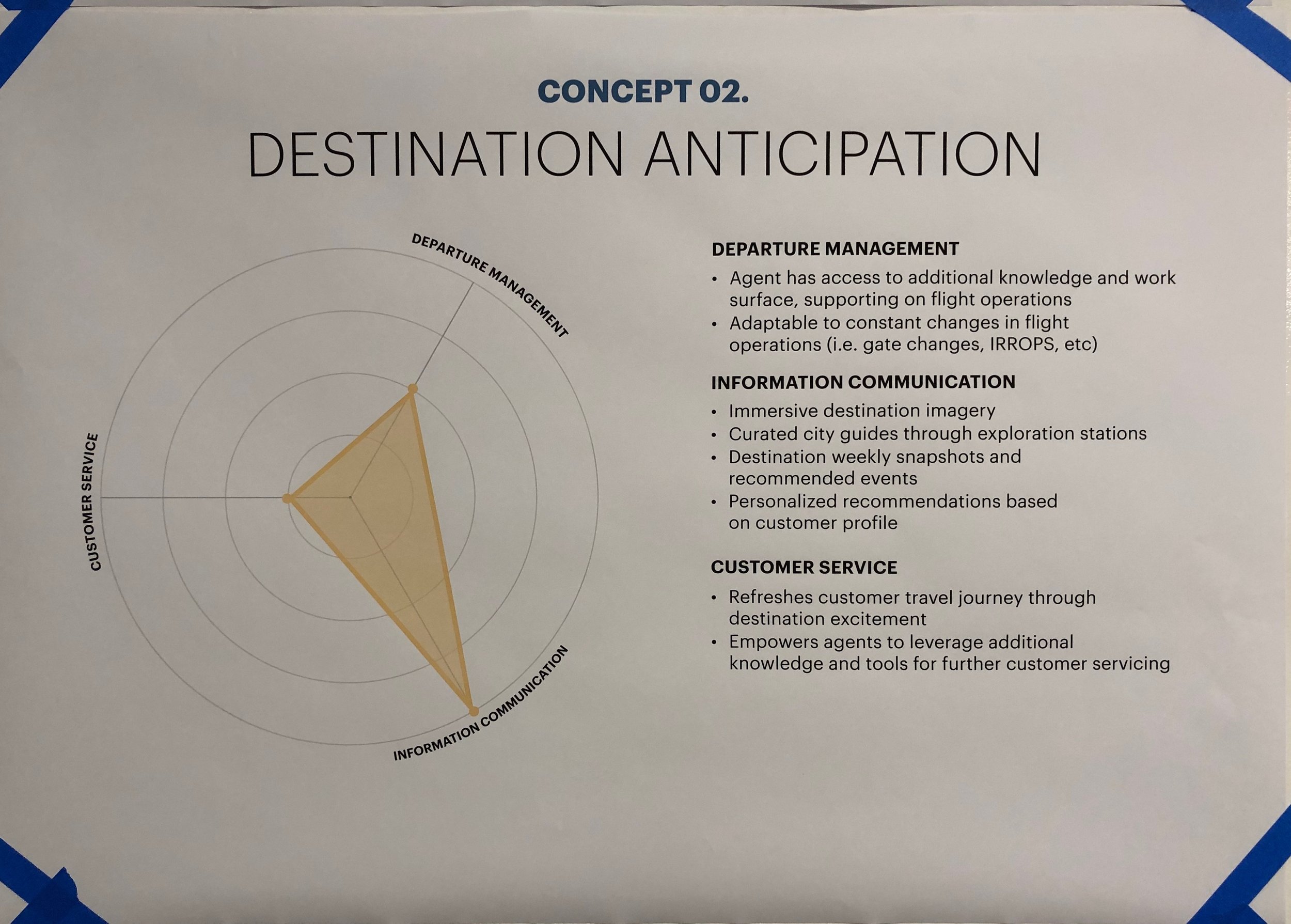
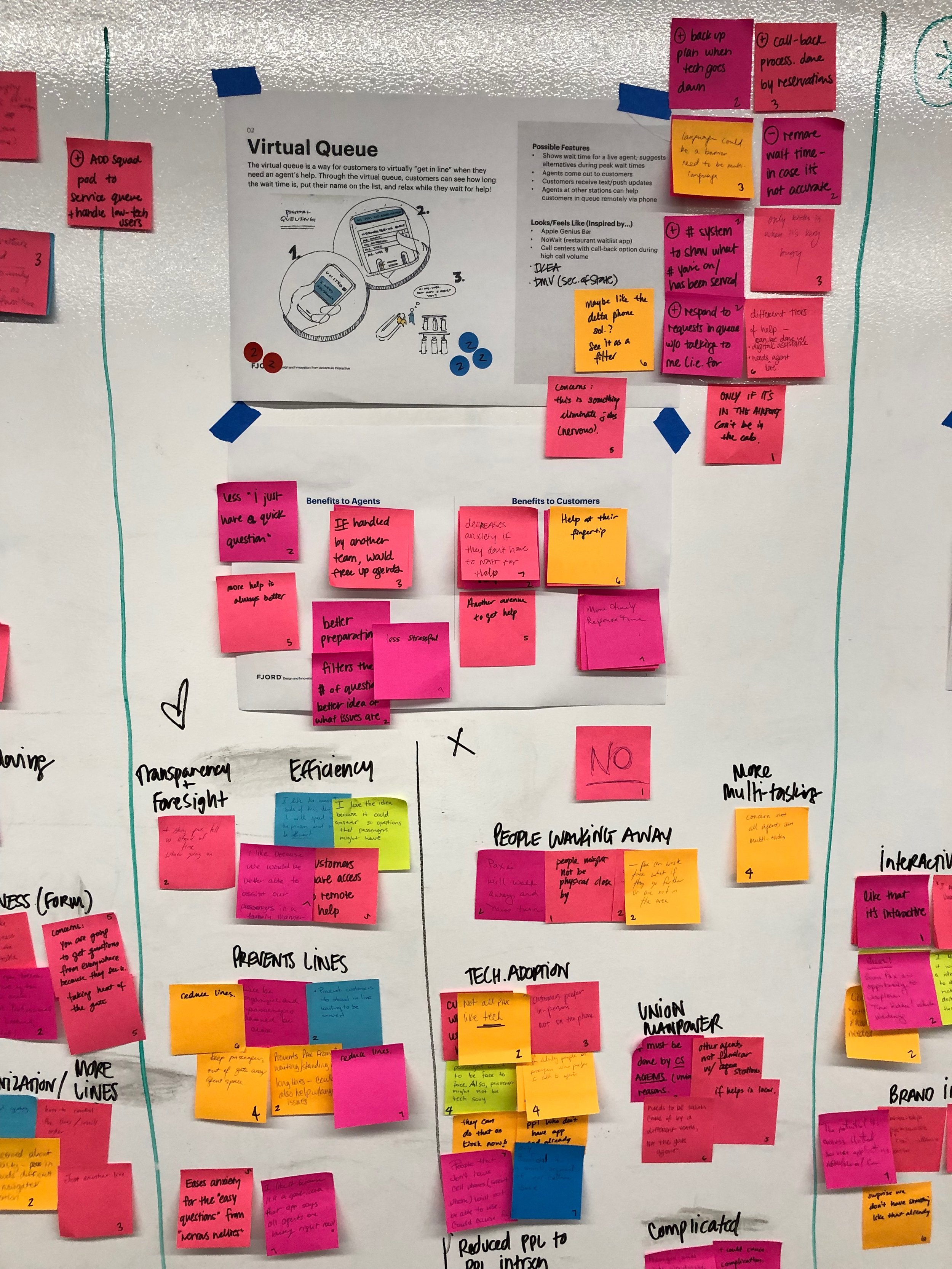
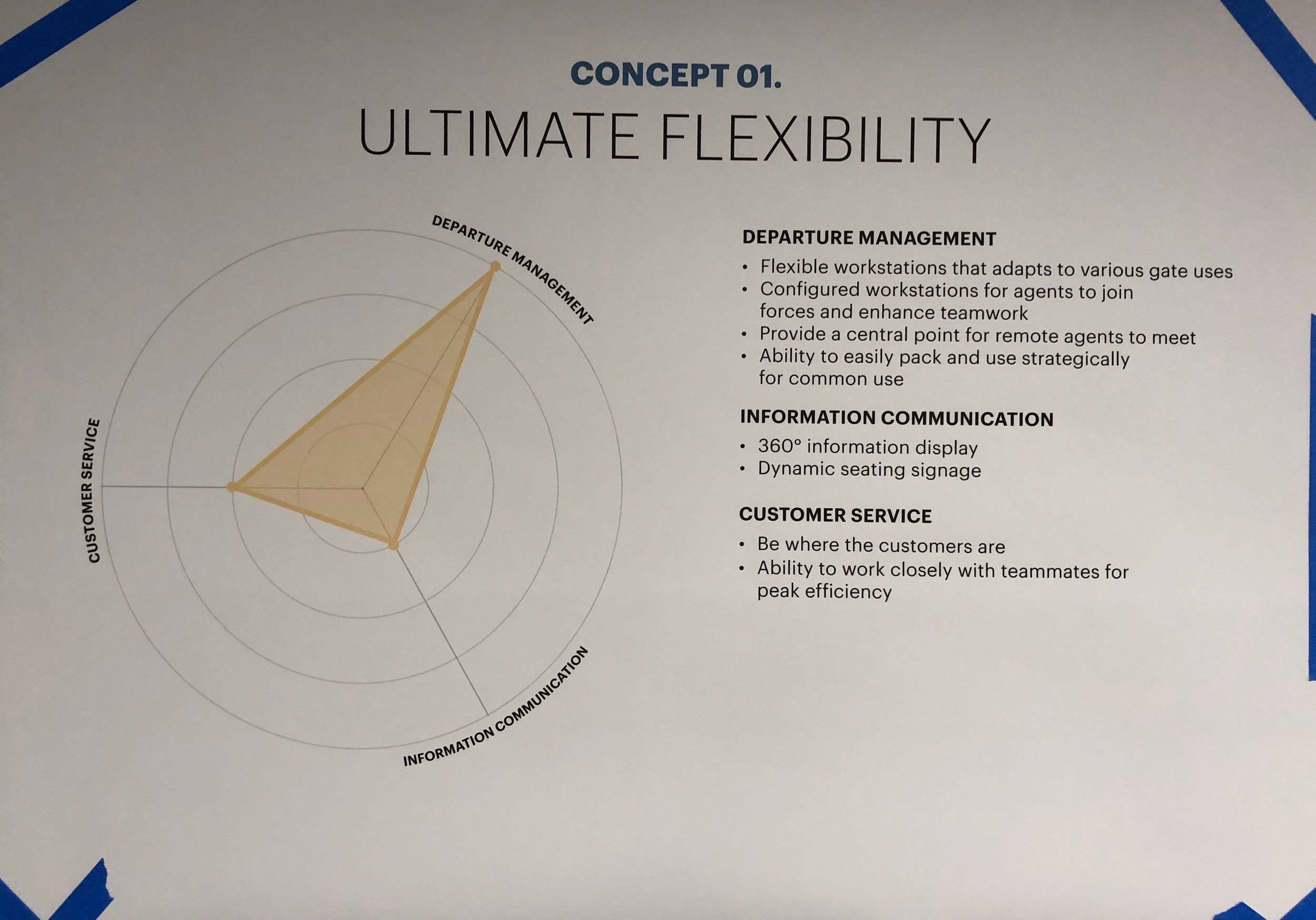
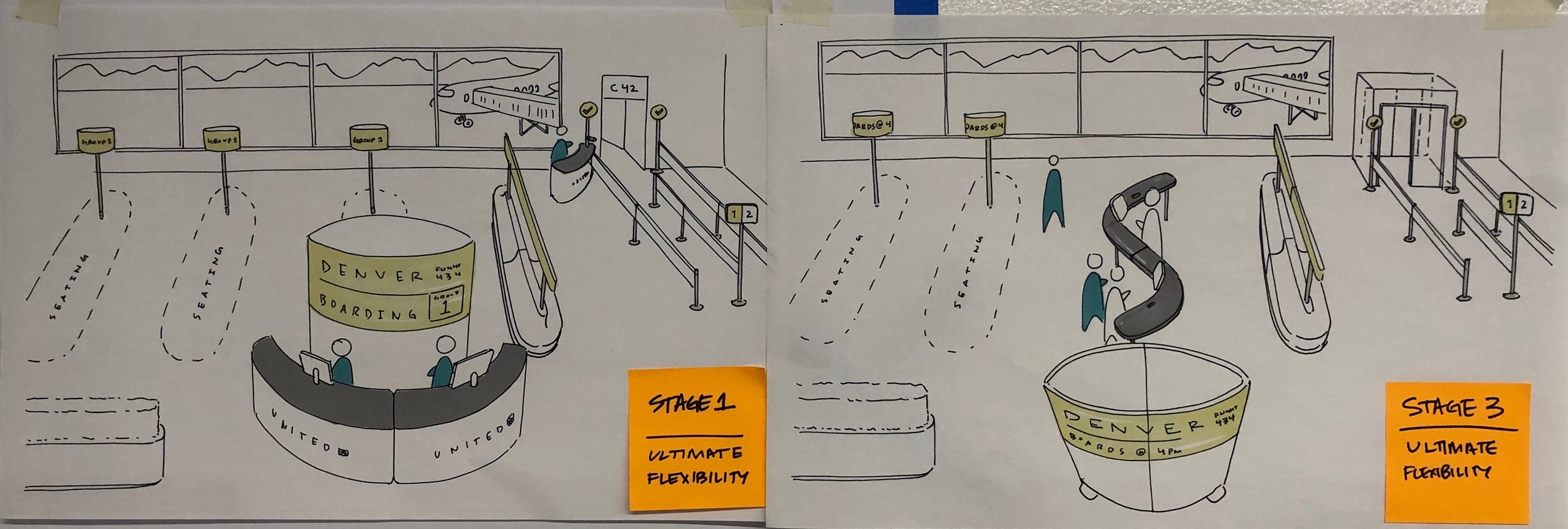

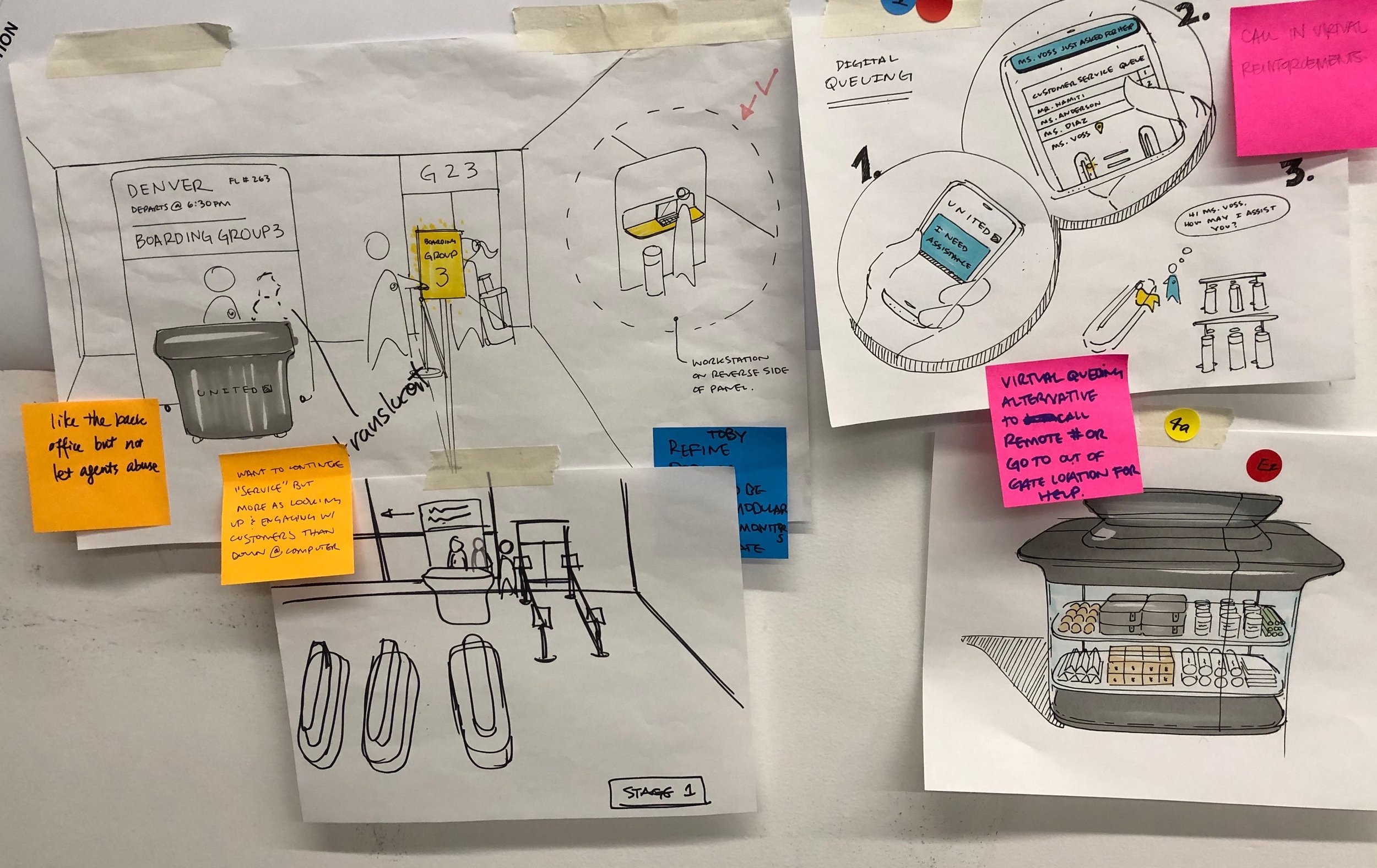



Designing the opportunity.
Prototyping, Evaluating the opportunity.
Early (Agency) Prototypes
-

CONCEPT 1: "ELEVATE"
Drawing inspiration from the hospitality industry, this idea focuses on elevating our customer service ability. Using tools, technology and different use of space to complement the way agents work and to facilitate division of customer service and operating tasks. Bringing info and customer service forward to create a stronger feeling of hospitality.
-

CONCEPT 2: "MOD"
The core of this concept is a dynamic workforce; it is agile and flexible to address different departure operations. Before boarding, gate agents work together as a team at centralized customer service pods. Pods are distributed in multiple locations across concourses and able to serve multiple gates. When it is time to start boarding, agents will move to their assigned gates. This flexible design system can be reconfigured for different needs and is adaptable over time.
-

CONCEPT 3: "NOMAD"
In the future, much of the problem resolution in the physical gate area can be addressed virtually. Agents have everything they need to operate a flight through their MAP devices. In this podium-less world, agents can roam around the gate area assisting passengers who may need last-minute help. When necessary, they have the option to dock their MAP devices for a full scale monitor behind the secured area.
Reviewing the opportunity.
What I delivered at the end of the concept and early prototype walk-throughs was an augmented experience leadership could “virtually” walk through with a tablet at the gate or at headquarters. We took the agency work further as they were distanced from the complexity of the organizational/employee and operational processes and impacts.
The new mobile podium experience allowed for flexibility in technology evolution and power requirements.
The new podium design was modular in that it allowed legacy printers to eventually be removed with the base, allowing the “tulip” design to move where customers where.
The Final Report
What came later…
Although I left United in late 2018, the foundation of the innovation continued on. Below are articles and prototypes based on the designs and customer experience strategy delivered.
2019 Update
United’s Cleveland Airport (CLE) was designated as their innovation test site at Gates 17, 18 or 23. They tested various prototypes developed to create a more relaxed, modern and personalized experience that evolves with our customers’ needs.
This continued over the summer and invited customer feedback on the prototyped experiences.
2019 Prototyping at CLE Terminal
2020 Update
United was testing for concept for evaluations in:
Biometrics for automated gate boarding
Remote agent displays
Mobile self-help tools
Improved gate designs at Cleveland, Chicago
On-demand agent support
United testing new gate layout at Chicago O'Hare
2020 ORD Gates Redesign
“This is about enhancing the customer experience wherever and however we can and about giving our customers more options.”
2022 Update
United is currently testing for release biometrics, remote agent displays, mobile self-help tools and on-demand agent support.
2022 ORD Gates Redesign
United testing new gate layout at Chicago O'Hare
Note: The Fjord / Matter Design team was selected as the agency to support (our) United Airlines’ vision. I was the business team liaison to Fjord as project oversight. Some of their designs are reflected in this project. These were speculative designs and prototypes and not final considerations. I provided United Airlines a more comprehensive report that was connected to our IT department’s needs to have phased, adaptive designs with a fully immersive, augmented experience.








